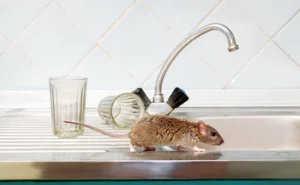
Since the recent tragic passing of Betsy Arakawa, wife of the late actor Gene Hackman, from the rodent-borne hantavirus, we’ve received numerous inquiries from clients concerned about their risk of contracting hantavirus from rodents in their homes. This increased attention on rodents and rodent-borne diseases can be a good opportunity for pest management professionals (PMPs) to build trust and better communication with their clients by offering essential and helpful information, reassurances and expert solutions for protecting their homes and businesses from rodent infestations.
When speaking with your clients, it is important to acknowledge their concerns while providing facts and reassurances. Be sensitive about how finding a mouse in their home can be unsettling. Let them know this is common, and doesn’t necessarily indicate an immediate health risk. Contracting hantavirus is extremely rare and preventable. Transparency builds trust, so be clear about the extent of the issue, treatment timelines and expected results.
Key points to emphasize include:
- The presence of a single mouse does not mean there is an active infestation or immediate danger. However, a professional inspection is recommended to assess the situation.
- If clients find mouse droppings, they should avoid sweeping or vacuuming, as this can aerosolize virus particles. Instead, they should wear gloves and a mask, dampen the droppings with a water-diluted bleach solution, and carefully wipe them up before disposing of them in a sealed bag.
- Professional pest management services provide the safest and most effective approach to removing rodents, disinfecting affected areas, and implementing exclusion techniques to prevent future infestations.
- A pest management company that employs digital technology, such as on-site rodent monitoring can increase the chance of early interception, treatment and exclusionary work. Minimal use of biocides, by detecting rodent activity earlier, helps frame out your sustainability initiative.
Manage expectations
Empower clients with prevention tips and information on recognizing signs of an infestation, including how to handle a mouse sighting or droppings. Clearly explain treatment options and set realistic expectations regarding how long it will take to resolve their rodent issues, emphasizing that “perfection” isn’t possible even when the infestation has been resolved.
Clients should understand that rodent problems, especially in cooler months, are common and often hard to avoid. However, when they act quickly, they can prevent bigger problems from occurring, like property damage and health concerns. Emphasize that regularly scheduled services are key to managing these risks — and that preventing rodent-borne diseases starts with proactive measures to avoid infestations before they start.
Explain that modern pest management strategies focus on technology-driven solutions, not just setting traps or using chemicals. Position your services as advanced and the most effective way to prevent an infestation before or right at the start.
Be the expert
While hantavirus has been the focus of recent discussions, it is important to educate clients — after familiarizing yourself — on other rodent-borne diseases like Salmonella, leptospirosis and lymphocytic choriomeningitis (LCM). Create and share strategies for minimizing risks.
Focusing on prevention, emphasizing professional exclusion methods, and positioning your services as the safest and most effective way to keep homes rodent-free allows you to build trust and reinforce the value of proactive pest management.
Leave A Comment